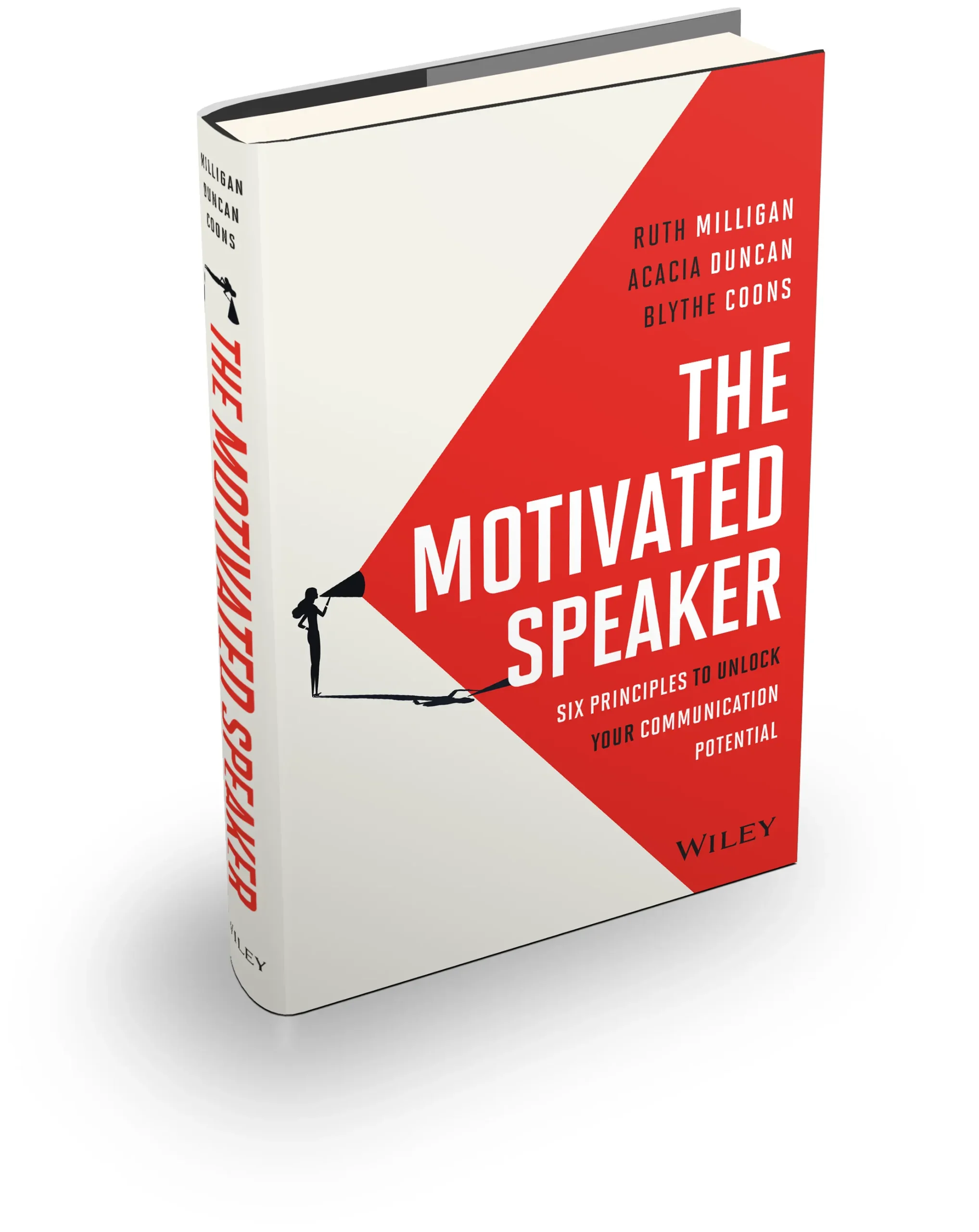This article, by Blythe Coons, is a continuation of our series on the (negative) emotions that typically trigger calls to us, and small tips to mitigate these challenges. They may feel familiar. That’s because they’re happening in board rooms and offices around the world on a regular basis.
Boredom
Noun: Not able to engage meaningfully in whatever it is that you’re doing.
In our work as speaker coaches and executive communication coaches, nothing signals failure more quickly than an audience disengaging due to boredom. There are so many ways to be distracted these days, and with diminishing attention spans, boredom can happen quickly.
It’s important to remember that boredom is a result. When you are giving a talk and someone is bored in front of you, can you trace it back to where you might have gone wrong?
Start with what they are interested in
When you were planning your speech or presentation, did you consider your audience? Did you ask yourself, “What do they want to know?” Maybe you didn’t. Maybe you were focusing on what you wanted to share, what you wanted them to know. That’s okay too, as long as you give them context about why it might be important to them.
Bottom line: Either answer their question, or give them a reason to stay engaged with yours.
Style matters
I’m currently working with a speaker who has shaped his talk well. He’s aligned with what the audience cares about, he has three compelling chapters, with incredible stories to illustrate where he’s going without declaring it overtly. But he’s telling it all at the same level. Every word sounds the same. And it all sounds angry. It doesn’t need to, and it’s not serving his talk.
The audience needs jolts–changes in energy, volume, pitch, structure, storytelling, etc.–to stay engaged. I encouraged him to figure out where in his talk he can use that emotion well, without overusing it. And where he can affect the audience with a story told in a different way so that they don’t become inured to his voice and rhythms. Set your audience up for success! Make sure it’s easy for them to continue listening, and they will want to!
A good presenter is always looking for cues in their audience. Don’t just look for the smiling faces–look for the closed eyes, the people on their phones–they’ll tell you what you really need to know.
Stories stick
Our brains love a good story. Stories are great for helping us understand complex ideas and data, and making information really sticky. Too often, we communicate information, but it can feel like information waitering–just dumping information into someone’s lap. Add a story to make it meaningful.
I have a client who needed to recap a talk by the FDA to her team. It was about changes the FDA is making to the audit process. Boring, right? She was worried it would be tiresome to her audience. First, she doesn’t have to recap the whole thing in her talk, just her biggest takeaways. Then I asked her why auditing was interesting to her, or if she had any stories of audits gone wrong. Her eyes lit up. She had a bunch of them! So we worked to connect those stories to the information she had to deliver. All of a sudden, her talk about FDA audits was transformed, and no one would be falling asleep.
Even interesting talks can be improved with stories as examples. Stories can show that we’re vulnerable and human, leading to connection, which is what keeps people interested.
Jolts and stories are two ways to avoid boredom, but there are other tools that can help. If you’re looking to keep your audience engaged in your presentation or talk, reach out. We’d love to work with you.
Want to read more? Find our posts on Doubt, Feedback, Frustration, and Annoyance.
Don’t Your Audience? We Can Help.
Don’t bore your audience. Engage them! With our Influential Storytelling class, you’ll learn how stories let you bridge what you know and care about to what you want your audiences to know and care about. Contact us and let us know how we can support you.


